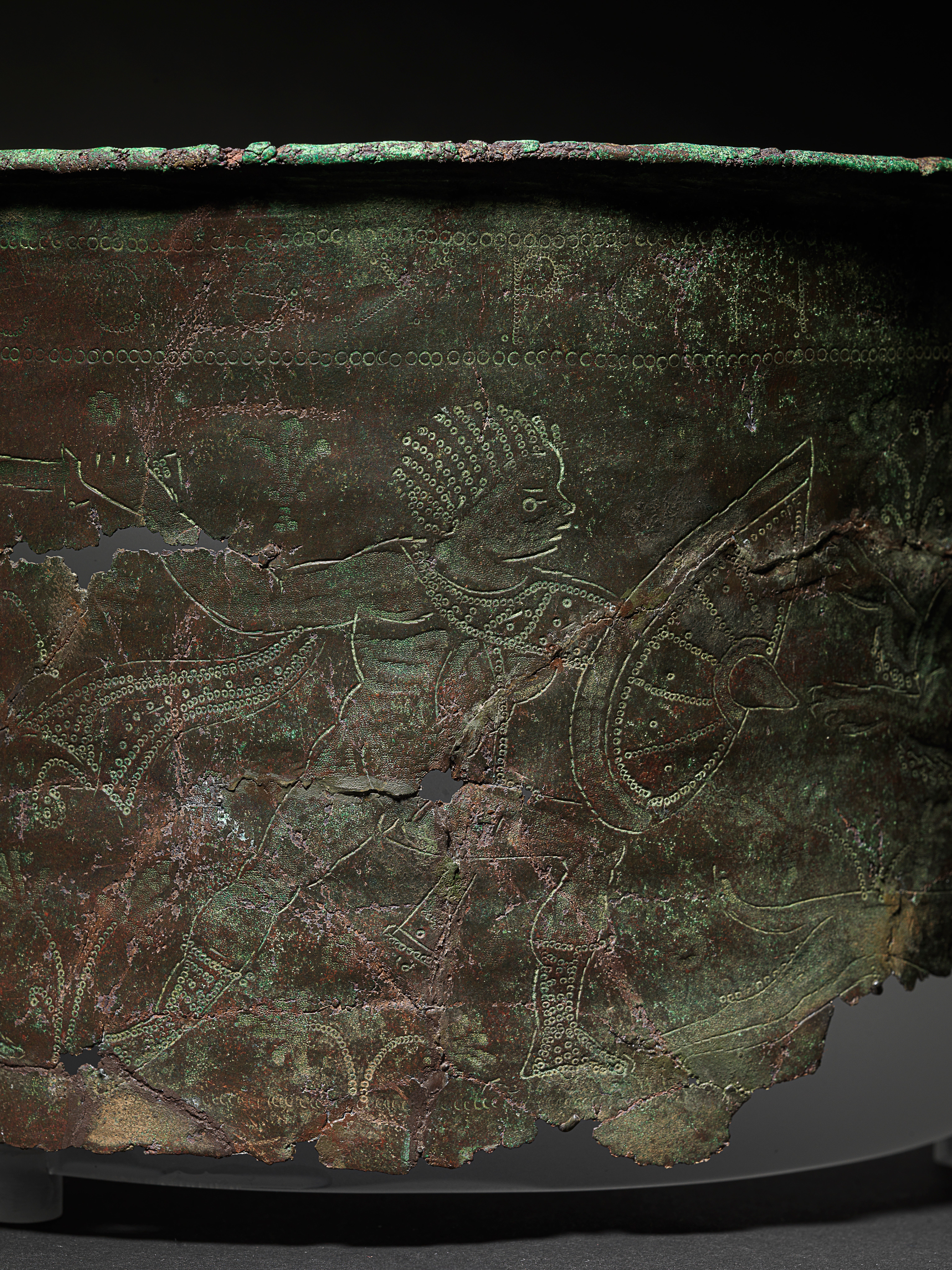A sixth-century Byzantine bucket, painstakingly reconstructed from fragments discovered at the Sutton Hoo archaeological site, likely held the cremated remains of an “important person”, according to experts.
The discovery of additional bucket pieces during a Time Team excavation in 2024 has sparked hope for further insights into the unique cremation burial.
The Bromeswell bucket, as it is known, features a hunting scene decoration and is believed to have been crafted decades before the famed Sutton Hoo ship burial.
The bucket's entire base was found intact, along with an unburnt comb, possibly made of antler.
Archaeologists are optimistic that further analysis will shed more light on the identity and status of the individual whose remains were placed within the elaborately decorated bucket.
“We knew that this bucket would have been a rare and prized possession back in Anglo-Saxon times, but it’s always been a mystery why it was buried,” National Trust archaeologist Angus Wainwright said.
“Now we know it was used to contain the remains of an important person in the Sutton Hoo community. I’m hopeful that further analysis will uncover more information about this very special burial.”
Cremated human and animal bones confirmed the bucket was used as a cremation vessel, Mr Wainwright said.
Among the human remains were fragments of skull and an ankle bone.
Further analysis of these bones aims to shed light on the cremation process itself, including the composition of the funeral pyre.
While the sex of the individual couldn't be determined from the bones, researchers hope to extract ancient DNA from a comb found at the site, potentially revealing the deceased's identity.
The animal bones belonged to a species larger than a pig. Horses were often included on early Anglo-Saxon cremation pyres as a sign of status.
Fragments of the 1,400-year-old Greek-inscribed bucket were first uncovered at Sutton Hoo in 1986, with further pieces found in 2012 before the 2024 discovery.
Concentric rings visible in CT scans indicate the bucket was made by cold hammering.

Visitors can see the main fragment on display at Sutton Hoo. It is on long-term loan from the Annie Tranmer Charitable Trust.
The fragment is decorated with a hunting scene, with men armed with swords and shields, and animals including lions and dogs.
The latest fragments include feet, paws, the base of shields and even the missing face of one of the men.
The bucket base and comb will now be carefully conserved to allow further study and reconstruction.
“We’ve finally solved the puzzle of the Bromeswell bucket – now we know that it is the first of these rare objects ever to have been used in a cremation burial,” Helen Geake, Time Team’s Anglo-Saxon expert, said.
“It’s a remarkable mixture – a vessel from the southern, classical world containing the remains of a very northern, very Germanic cremation.
“It epitomises the strangeness of Sutton Hoo – it has ship burials, horse burials, mound burials and now bath-bucket burials.
“Who knows what else it might still hold?”
The second phase of Time Team’s research collaboration project with FAS Heritage and the National Trust will continue until June 13.
Ed Sheeran expands hot sauce line with biltong protein snack
Likely human remains wash up near Taylor Swift’s holiday home, cops say
Patient of suspended hospital surgeon says she wants answers
Teenager finds 1,800-year-old ring depicting Roman goddess Minerva
Young woman and six children found in Alexander the Great’s tomb
Rare stone carving depicting Assyrian king surrounded by gods unearthed







